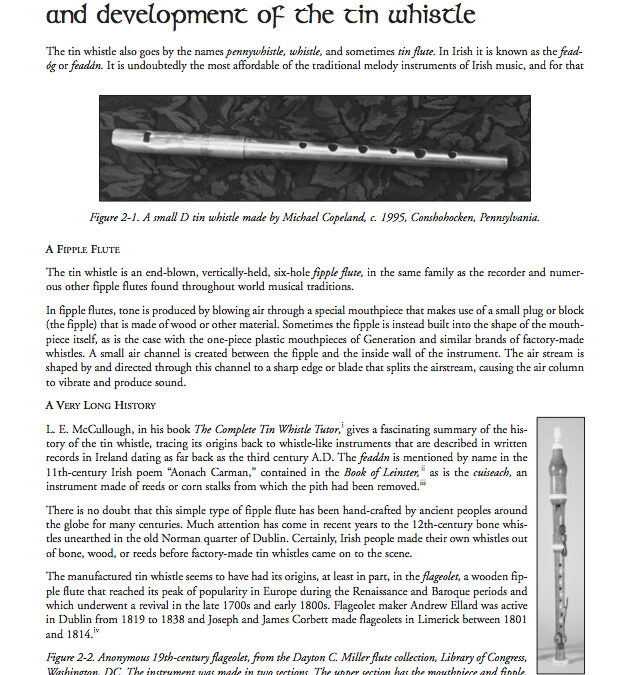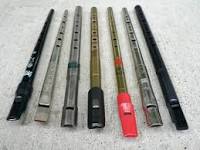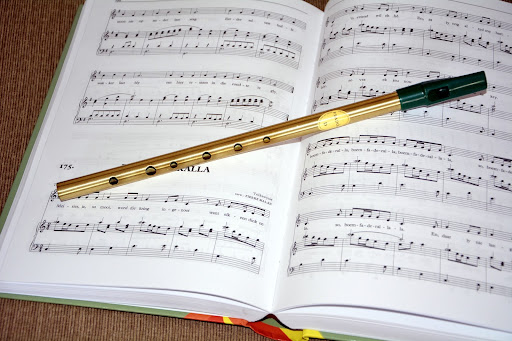
Tin whistle is an easy instrument to learn; there are no keys; just open and close holes with your fingers.
Tin whistle can be played in a range of notes that spans almost two octaves. To reach its upper registers, however, more air will need to be exhaled through your breathpipe.
Hand position
Tin whistles require slightly different hand positioning from penny whistles; to properly hold one, your hands must be held at a 45-degree angle with fingers facing downward and away from yourself.
No matter your hand orientation, when starting to play the whistle it is best to hold it with your thumb at the bottom and your other fingers at the top. Although this position might feel slightly awkward at first, it will come in handy later when playing other woodwind instruments such as clarinet.
Keep your little pinky finger above the body of the whistle (not below), covering its six keyholes with your fingertips for maximum clarity in sound output from your whistle. This will produce a sound that’s clear and distinct.
Create vibrato by using your breath to alter air pressure while holding notes – this will add extra zest and flair to your playing!
Mouth position
Mastering the mouth position for a tin whistle is essential – it will make a significant impactful statement about both sound quality and performance.
When playing the tin whistle, your lips should be slightly wider than your lower teeth for optimal airflow into both lungs and mouth. This will create the optimal seal to prevent air leakage into lungs or mouth from the instrument itself.
Every whistle requires different amounts of air for every note, and finding your optimal note requires practice! An air tuner is an easy way to quickly identify this sweet spot! When using one to tune a tin whistle you should listen out for notes that range from weak air pressure up to forced air pressure – this should give an accurate representation.
Tonguing is a widely practiced technique to accentuate certain notes and assist with breath control. While tongueing may not be required for every note on a tin whistle, doing so may make certain notes more easily accessible and easier to play.
Finger position
An essential aspect of learning tin whistle is grasping how to hold your fingers. A common misstep made by beginners is holding their hands with fingers above rather than below, instead.
In such an instance, the lowest tone hole will become open, rendering it impossible for players to play the low D note on the whistle.
As your fingers cover the note, air will easily escape through your lips, making it more challenging to manage breathing and keep pace with timing.
There are various techniques for playing tin whistle, including cuts, strikes and short rolls. Cuts resemble strikes in that their notes sound similarly short compared to their strike counterpart; cuts may be used when full rolls cannot be executed (such as on lower notes of the instrument).
Tongue position
Tongue position is an integral component of learning how to play the tin whistle, as it can drastically change both tone and musical soundscape. Thus, it’s worth spending some time practicing managing this area carefully.
A key technique in playing the ukulele is making a “te” sound with your tongue tip instead of making the more familiar “th” sound seen with other instruments, like trumpet. This will result in more even tones and clear notes for every note you play.
By mastering vibrato technique, it will give your whistled notes a distinct sound. Vibrato can add depth and warmth to the notes being whistled.
To do this, use your tongue to “shiver” the front part of your mouth, giving the whistle an impressively vibrating sound that’s really enjoyable to experiment with. Just be wary not to overdo it as too much vibrating may make your whistling sound unsteady or uncertain.
How to Hold Tin Whistle Correctly
Tin whistle is an easy instrument to learn; there are no keys; just open and close holes with your fingers.
Tin whistle can be played in a range of notes that spans almost two octaves. To reach its upper registers, however, more air will need to be exhaled through your breathpipe.
Hand position
Tin whistles require slightly different hand positioning from penny whistles; to properly hold one, your hands must be held at a 45-degree angle with fingers facing downward and away from yourself.
No matter your hand orientation, when starting to play the whistle it is best to hold it with your thumb at the bottom and your other fingers at the top. Although this position might feel slightly awkward at first, it will come in handy later when playing other woodwind instruments such as clarinet.
Keep your little pinky finger above the body of the whistle (not below), covering its six keyholes with your fingertips for maximum clarity in sound output from your whistle. This will produce a sound that’s clear and distinct.
Create vibrato by using your breath to alter air pressure while holding notes – this will add extra zest and flair to your playing!
Mouth position
Mastering the mouth position for a tin whistle is essential – it will make a significant impactful statement about both sound quality and performance.
When playing the tin whistle, your lips should be slightly wider than your lower teeth for optimal airflow into both lungs and mouth. This will create the optimal seal to prevent air leakage into lungs or mouth from the instrument itself.
Every whistle requires different amounts of air for every note, and finding your optimal note requires practice! An air tuner is an easy way to quickly identify this sweet spot! When using one to tune a tin whistle you should listen out for notes that range from weak air pressure up to forced air pressure – this should give an accurate representation.
Tonguing is a widely practiced technique to accentuate certain notes and assist with breath control. While tongueing may not be required for every note on a tin whistle, doing so may make certain notes more easily accessible and easier to play.
Finger position
An essential aspect of learning tin whistle is grasping how to hold your fingers. A common misstep made by beginners is holding their hands with fingers above rather than below, instead.
In such an instance, the lowest tone hole will become open, rendering it impossible for players to play the low D note on the whistle.
As your fingers cover the note, air will easily escape through your lips, making it more challenging to manage breathing and keep pace with timing.
There are various techniques for playing tin whistle, including cuts, strikes and short rolls. Cuts resemble strikes in that their notes sound similarly short compared to their strike counterpart; cuts may be used when full rolls cannot be executed (such as on lower notes of the instrument).
Tongue position
Tongue position is an integral component of learning how to play the tin whistle, as it can drastically change both tone and musical soundscape. Thus, it’s worth spending some time practicing managing this area carefully.
A key technique in playing the ukulele is making a “te” sound with your tongue tip instead of making the more familiar “th” sound seen with other instruments, like trumpet. This will result in more even tones and clear notes for every note you play.
By mastering vibrato technique, it will give your whistled notes a distinct sound. Vibrato can add depth and warmth to the notes being whistled.
To do this, use your tongue to “shiver” the front part of your mouth, giving the whistle an impressively vibrating sound that’s really enjoyable to experiment with. Just be wary not to overdo it as too much vibrating may make your whistling sound unsteady or uncertain.

